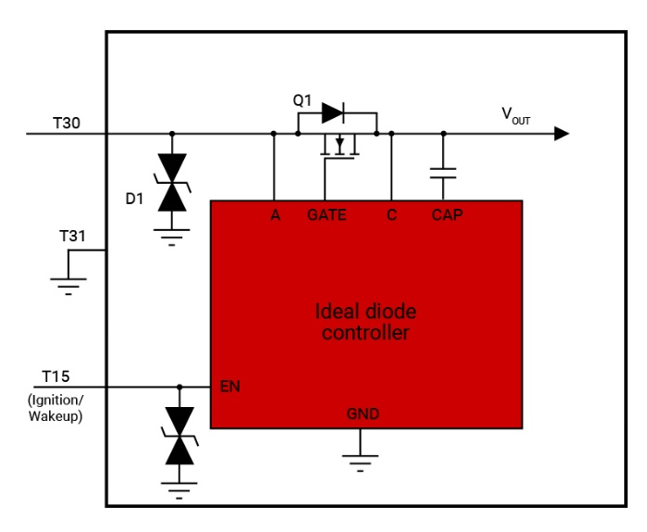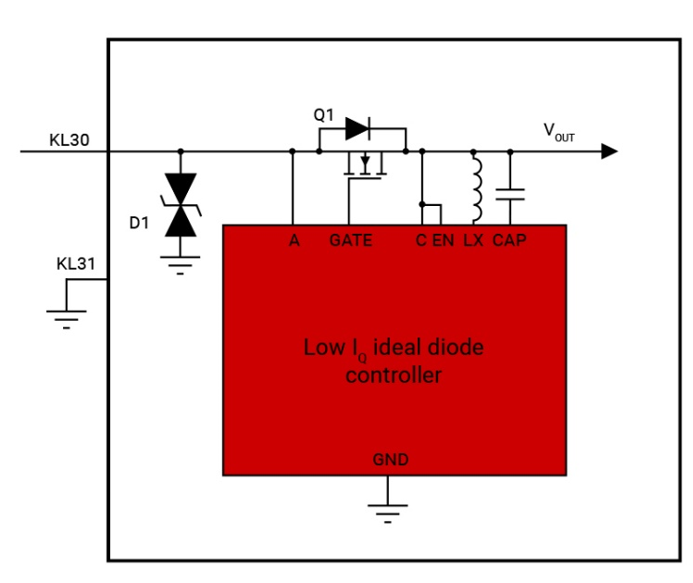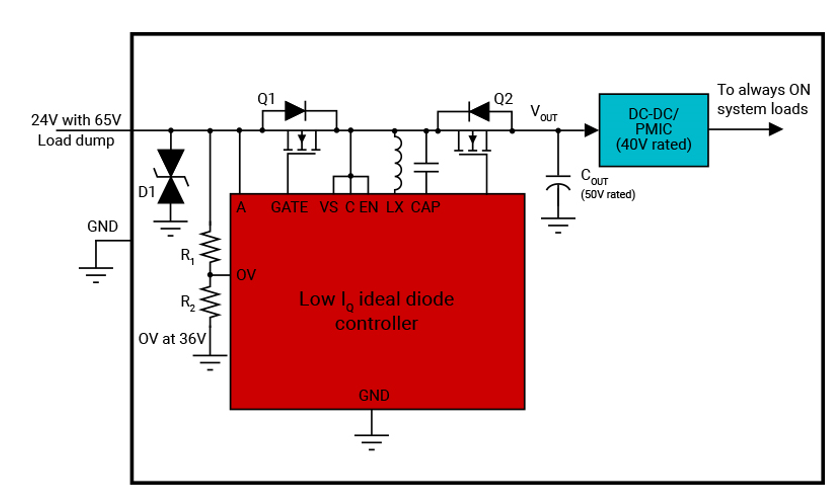With the increasing number of electronic circuits in vehicles, the battery power consumption also increases significantly. In order to support functions such as remote keyless entry and safety, the battery should be powered continuously even when the car is stopped or flameout.
Since all vehicles use limited battery power, it is necessary to find a way to add more functions (especially when designing the front-end power supply system of the vehicle) without significantly increasing power consumption. Whether it is necessary to comply with strict electromagnetic compatibility (EMC) standards (for example, ISO7637 of the international organization for standardization and LV 124 standard formulated by German automobile manufacturers) directly affects the overall design of the front-end battery reverse protection system. Some OEMs stipulate that the total current consumption when the vehicle is parked is less than 100 µ a per electronic control unit (ECU) in a 12V battery powered system and less than 500 µ a in a 24V battery powered system.
In this paper, I will introduce three methods to design low quiescent current (IQ) automotive battery reverse protection system.
Use T15 as ignition or wake-up signal
The first way to design a low IQ battery reverse protection system is to use T15 as an ignition or wake-up signal. T15 is a terminal, which will be disconnected from the battery when the vehicle ignition is turned off. Using T15 as an external wake-up signal is a traditional method of running the ECU in sleep or active mode. Figure 1 is an example.

Figure 1: battery reverse protection in automobile ECU using T15 as wake-up signal
When the ignition is turned on, T15 is connected to the battery voltage (Vbatt) potential, so that the enable pin of the ideal diode is at the logic high level. The ideal diode controller in active mode actively controls the external FET to achieve ideal diode operation while enabling charge pump, control and field effect transistor (FET) driver circuits. When the vehicle stops, T15 drops to 0V, and the ideal diode controller responds with the off state, which will cause the charge pump and control block to turn off, so that the IQ consumption is less than 3 µ a. In this operating mode, the external FET is turned off, and the body diode of the FET forms a forward conduction path to supply power to the load. This scheme requires additional wiring to ECU.
Wake up signal using MCU and can of the system
The second method is to wake up using the system's microcontroller (MCU) and controller area network (can). In many cases, the communication channel of the system makes low IQ shutdown mode possible. Fig. 2 is an example system design using this method.

Figure 2: enable controlled low IQ battery reverse protection using MCU and can wake-up signal
The can transceiver in the vehicle converts messages from the communication bus to their respective controllers (usually MCU). The transceiver can indicate when the relevant function is not required by issuing a command to enter the standby mode until it is awakened. At this time, the relay message indicates that the controller will transmit the instruction to place the system in the low power state. Its implementation method is to make the enabling signal of the ideal diode controller at the logic low level. With the help of more advanced transceivers and system basic chips, a device can handle multiple functions of this process and transition to a low-power state or wake up.
The scheme requires internal control signal from MCU (controlled through can).
Ideal diode controller with normally open
The third method is to use a normally open ideal diode controller. You can imagine the system design that can enter the low-power state without control signal. In this design, the ideal diode controller can always be enabled without additional wiring and system software, even in sleep mode. This type of system design can be implemented using a low IQ ideal diode controller, such as lm74720-q1, lm74721-q1, or lm74722-q1, as shown in Figure 3. These devices integrate all necessary control blocks for battery reverse protection design in accordance with EMC standards, and integrate a boost regulator for driving the high side external MOSFET, so that the IQ during normal operation is 27 µ a. For more information, refer to the application manual "Fundamentals of ideal diodes".

Figure 3: battery reverse protection using a normally open low IQ ideal diode controller without external enable control
These ideal diode controllers support battery reverse protection with active rectification and load disconnect FET control with back-to-back FET topology to protect the downstream during system faults (e.g. overvoltage events), as shown in Figure 4.

Figure 4: battery reverse protection in 24V vehicle ECU using lm74720-q1
With adjustable overvoltage protection, you can use 50V rated downstream filter capacitors (instead of 80V to 100V rated capacitors) and 40V rated DC / DC Converters (instead of 65V rated converters) for system design based on 24V automotive battery input.
Lm74720-q1 and lm74721-q1 provide a fast response comparator of 0.45 µ s reverse current, a fast response comparator of 1.9 µ s forward current, and a powerful 30mA boost regulator to support and realize flexible and efficient active current regulation in automotive AC superposition test at frequencies up to 100kHz. The rectification speed of lm74722-q1 is twice faster than that of lm74720-q1 and lm74721-q1 devices. The response current of the forward comparator is 0.8 µ s, which can realize active rectification frequency up to 200kHz. Lm74721-q1 has integrated drain source voltage (VDS) clamping, which can realize the battery reverse protection design without transient voltage suppressor (TVS), so as to make the system solution more compact. For a detailed understanding of active rectifier, please read our application report "active rectifier and its advantages in Automotive ECU design".
epilogue
With lm74720-q1, lm74721-q1 and lm74722-q1 low IQ normally open ideal diode controllers, you can design automobile battery reverse protection system without external enabling control. These ideal diode controllers have low IQ, back-to-back FET driving capability and overvoltage protection characteristics. Therefore, downstream components such as capacitors with lower rated voltage can be used in the design, and the size of printed circuit board can be reduced for space limited ECU.